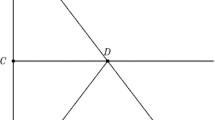Abstract
In the last half of the 16th century, the method of casting a solar image through an aperture onto a screen for the purposes of observing the sun and its eclipses came into increasing use among professional astronomers. In particular, Tycho Brahe adapted most of his instruments to solar observations, both of positions and of apparent diameters, by fitting the upper pinnule of his diopters with an aperture and allowing the lower pinnule with an engraved centering circle to serve as a screen. In conjunction with these innovations a method of calculating apparent solar diameters on the basis of the measured size of the image was developed, but the method was almost entirely empirically based and developed without the assistance of an adequate theory of the formation of images behind small apertures. Thus resulted the unsuccessful extension of the method by Tycho to the quantitative observation of apparent lunar diameters during solar eclipses. Kepler's attention to the eclipse of July 1600, prompted by Tycho's anomalous results, gave him occasion to consider the relevant theory of measurement. The result was a fully articulated account of pinhole images.
Similar content being viewed by others
Author information
Authors and Affiliations
Additional information
Communicated by W. Hartner
Dedicated to the memory of Ronald Cameron Riddell (29.1.1938–11.1.1981)
Rights and permissions
About this article
Cite this article
Straker, S. Kepler, Tycho, and the ‘Optical Part of Astronomy’: the genesis of Kepler's theory of pinhole images. Arch. Hist. Exact Sci. 24, 267–293 (1981). https://doi.org/10.1007/BF00357311
Received:
Issue Date:
DOI: https://doi.org/10.1007/BF00357311




